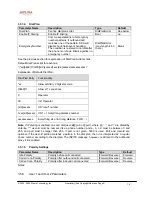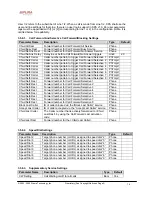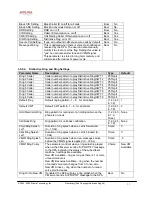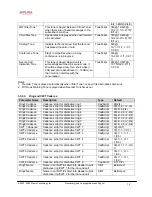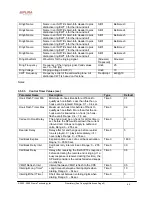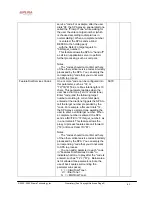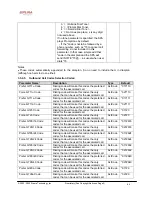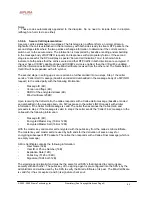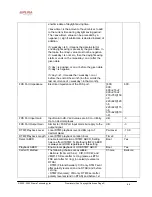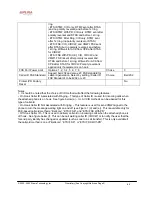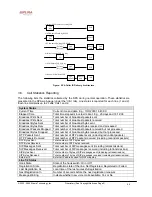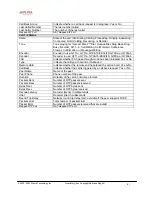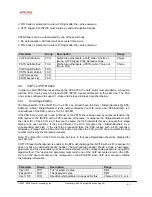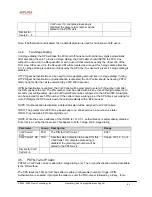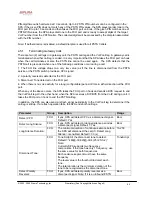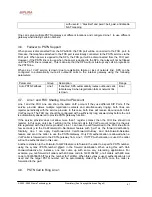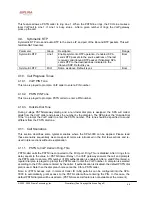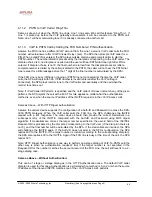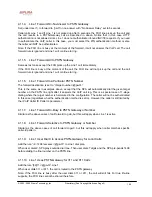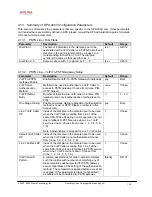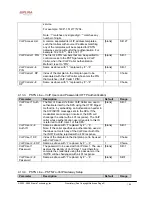
© 2003 - 2005 Sipura Technology, Inc
Proprietary (See Copyright Notice on Page 2)
89
ring
• ETSI DTMF: CID only. DTMF sent after DTAS
(and no polarity reversal) and before 1st ring
• ETSI DTMF With PR: CID only. DTMF sent after
polarity reversal and DTAS and before 1st ring
• ETSI DTMF After Ring: CID only. DTMF sent
after 1st ring (no polarity reversal or DTAS)
• ETSI FSK: CID, CIDCW, and VMWI. FSK sent
after DTAS (but no polarity reversal) and before
1st ring. Will wait for ACK from CPE after DTAS
for CIDCW.
• ETSI FSK With PR (UK): CID, CIDCW, and
VMWI. FSK is sent after polarity reversal and
DTAS and before 1st ring. Will wait for ACK from
CPE after DTAS for CIDCW. Polarity reversal is
applied only if equipment is on hook.
FXS Port Power Limit
Options: 1, 2, 3, 4, 5, 6, 7, 8
Choice
3
Caller ID FSK Standard
Support bell 202 and also v.23 FSK standard for
caller-id generation. Select by setting <Caller ID
FSK Standard> to bell 202 or v.23
Choice Bell
202
Protect IVR Factory
Reset
No
Notes:
1. It should be noted that the choice of CID method will affect the following features:
• On Hook Caller ID Associated with Ringing – This type of Caller ID is used for incoming calls when
the attached phone is on hook. See figure below (a) – (c). All CID methods can be applied for this
type of caller-id
• On Hook Caller ID Not Associated with Ringing – This feature is used for send VMWI signal to the
phone to turn the message waiting light on and off (see Figure 1 (d) and (e)). This is available only for
FSK-based caller-id methods: “Bellcore”, “ETSI FSK”, and “ETSI FSK With PR”
• Off Hook Caller ID – This is used to delivery caller-id on incoming calls when the attached phone is
off hook. See figure below (f). This can be call waiting caller ID (CIDCW) or to notify the user that the
far end party identity has changed or updated (such as due to a call transfer). This is only available if
the caller-id method is one of “Bellcore”, “ETSI FSK”, or “ETSI FSK With PR”.

